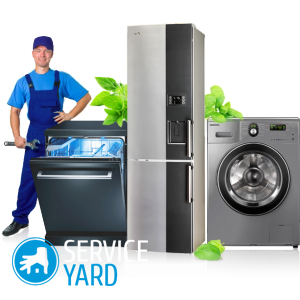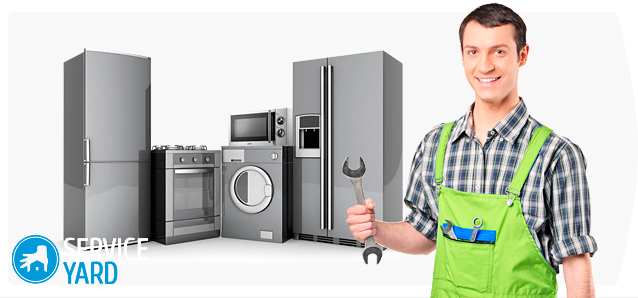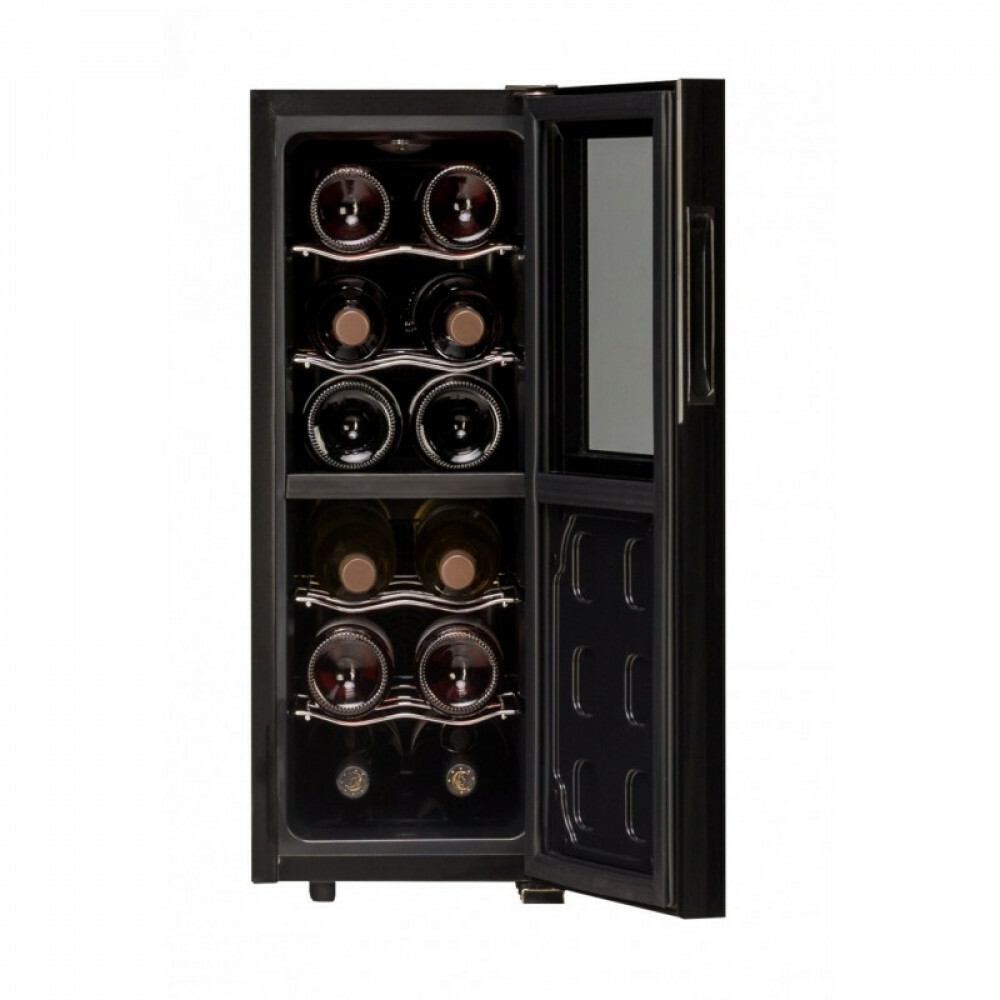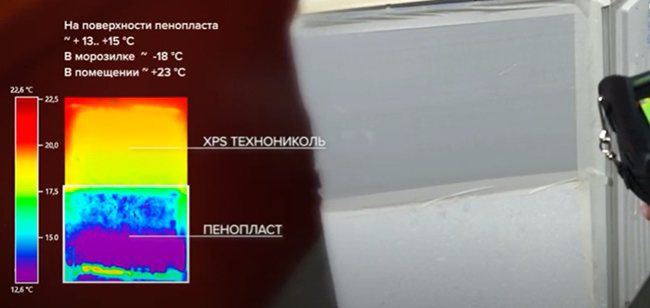
- What is needed for repair?
- Save your documents!
- What is the possible repair of household appliances?
- Where to take repair parts for household appliances?
- How to replace the battery in a quartz watch?
- Repairing the heater
- Repairing the iron
- Repairing the kettle
Washing machines, vacuum cleaners, heaters, air conditioners, refrigerators are not a complete list of devices without which the life of a modern city dweller would become a real hell. People just got used to it all without it. But household appliances periodically breaks down, and the question arises what to do with it. Is it possible to repair household appliances? Let's talk about this.
to the contents ↑What will it take to repair?
Of course, all electrical appliances are arranged in different ways. Each of them has a lot of nodes that fail for different reasons. Accordingly - in order to eliminate the malfunction, you will need different tools. It may very well be that if you decide to repair an air conditioner or a washing machine, you will have to buy some tools.
The standard set of tools
But there is a certain set that every self-respecting owner needs, unless he is going to flee to the service center due to every minor breakdown:
- tester( best multimeter);
- a set of screwdrivers of different sizes;
- screwdriver;
- pliers;
- chisel;
- sharp knife;
- drill with attachments.
Why is this all necessary?
- Testers are needed to determine which elements of the electrical system are out of order.
- Screwdrivers you can buy separately, but on sale there are many sets of screwdrivers of different sizes, including cross. So it's better to buy a couple of different sets right away.
- The purpose of the screwdriver is understandable - it is needed not only for repairing household appliances of large models, but also for fixing the built-in equipment, and for making all kinds of shelves and cabinets it will be useful.
- Do not open the wall of the washing machine with a chisel, but in some cases you can not do without this tool.
- A sharp knife is never superfluous.
- As for the drill with nozzles, it is not always necessary for repair of household appliances, but for its fastening it can be very useful.
Important! In general, there are not many instruments, and it is better if they are always at hand when it is necessary to perform small or more complex repair of household appliances with their own hands. And to ensure that they do not roll all these screwdrivers and pliers in the most unexpected places, they can buy a special organizer with containers of different sizes and shapes.
What else is useful for repair?
In addition to tools to start repairing household appliances at any time, it is useful to have:
- fasteners;
- several types of glue;
- painting tape;
- marker;
- the camera.
Important! With glue and fasteners everything is clear, but why do I need a camera? And everything is very simple. Very few people know thoroughly the device of all household appliances. If you undertake any repairs for the first time, it is very important to assemble nothing and not leave unnecessary details. The arrangement of the elements is best photographed before being disconnected, the benefit of modern digital photographic equipment makes it possible to do this without problems.
to the contents ↑Save documents!
Each new household appliance is accompanied by an instruction manual. It certainly must be kept:
- If the technique is from a solid manufacturer, the instructions say everything - from the complete set to the methods of repairing the used household appliances.
- Buying equipment with hands, do not forget to ask the former owners if the documentation has been preserved. This will greatly facilitate your life when you have to change the seal, put a new heater or do other repairs to household appliances yourself.
Important! On the Internet, you can now find instructions for any device, including the old ones. You just have to take care that your computer reads such formats as pdf or djvu - it is in them that the technical documentation is kept most often, because such formats allow placing not only text, but also drawings.
to the contents ↑What is the possible repair of household appliances?
There are problems that can be eliminated by anyone, if only his hands grow from the right place. For example, it can be such a repair of household appliances:
- put a new battery;
- replace the heater and other components;
- change seal;
- clean the filters.
There are also breakages, for which it is better not to undertake, if there is no corresponding knowledge and skills. For example, it's better not to repair household appliances yourself:
- If the touch panel has been slammed, it's best to contact the service center, because it is possible to repair the firmware, which you can hardly do yourself.
- Some washing machines will not work without a specialist to replace the power cord.
In general, in each specific case it is necessary first of all to soberly assess their strengths and capabilities.
to the contents ↑Where to take repair parts for household appliances?
In salons, where household appliances of a particular firm are sold, there are also usual components. So for a spare hose or a new battery, you should go there.
Why is that?
- The manufacturer can have its own standards, and accessories from other companies may simply not approach your device.
- There are people working in the company's salon who deal with this brand, they have probably been approached with a variety of household appliances repair questions, so you can count on consultations.
- If you lost the manual to your device - you can find it in the company salon, there you can scan it or, at the very least, resample it to your camera.
Important! Components from other companies may not just be useless to your device, but even dangerous: if you have to use them - find the correspondence table.
to the table of contents ↑Safety in the repair of household appliances
Having decided to take care of repairing household appliances with your own hands, think not only about how to fix the equipment, but also about your own safety:
- The device must be disconnected from the mains during the repair.
- The unit must be clean and dry.
- Some types of work in the repair of household appliances better perform gloves, and even in a respirator.
- When working with acids( for example, with acetic acid), care must be taken to prevent the droplets from getting into the eyes or mucous membranes.
- Tools, fasteners and everything else that you need to repair home appliances, you need to store in a place where small children can not reach.
Why all this?
- During the repair of household appliances, you disrupt the operation of the electrical chain, a breakdown can occur anywhere. Therefore, it is necessary to pull out the plug from the socket.
- As for moisture, water is an excellent conductor, and if the circuit is broken - you can get a pretty strong electric shock.
- Some parts may have a lubricant, or dirt may accumulate there. Therefore, gloves should always be at hand.
- Fasteners should be removed so that the small child can not put a screw in his nose or swallow the nut. Yes, and for electrical appliances, the element that happened to be in the wrong place may become disastrous.
How to replace the battery in a quartz watch?
This action is more likely not to repair household appliances, but to prevent - batteries in the clock should be periodically changed, otherwise - the device will stop showing the exact time.
Important! The quartz resonator operates at a frequency of 32768 Hz. It is located on a chip that looks like a drop, but in fact it is a semiconductor crystal filled with compound with wiring.
All quartz clock circuits look the same:
- Voltage is supplied from a battery rated at 1.5 or 3 volts to a switch.
- The switch is connected to the crown.
- The crown is pulled out - the contacts open.
- Voltage is interrupted.
- The clock stops.
When should I change the battery?
In most models, the battery is designed for 1 year, for some branded watches it can work for longer - three or even five years. When the battery sits down, the watch begins to lag. In the end they stop.
Important! Some models have a special function that indicates that the charge ends - the second hand starts jumping several times.
Preparing the table
Before changing the battery, though it is not a full-fledged repair of household appliances, you have to take care of the workplace. In the clock there are very small details, and losing something is very simple. Even worse, if a foreign object gets between the teeth of the gears, and this can be just a grain.
To prevent this from happening:
- Wipe the surface of the table with a damp cloth.
- Spread a large white sheet of paper on it.
Important! Hair before work is best removed under a handkerchief or cap.

Preparing the
clock Even the weakest battery lasts long enough. For a year in a watch and a bracelet can accumulate a lot of dirt. Replacing the battery is a wonderful reason to remove all this.
But first you need to remove the bracelet, which is attached to the clock with the help of pins that easily fit into the fastening pipes:
- Hook an awl or thick needle on the pin on the pin.
- Dip the pin into the tube of the strap.
- Separate the bracelet from the clock
To then put the bracelet in place, you will need to do the following:
- Insert one pin of the strap into the hole in the tab and drown.
- Insert the second pin in the second hole.
- Make sure the pins are clearly in the holes.
Important! Do not forget to correctly orient the watch when you attach the bracelet.
Clean the watch
It's very simple. It is enough to simply wipe the watch with a cloth soaked in soapy water and carefully wrung out. But the bracelet or leather strap can be washed - in the dishwasher or washing machine. Just do not forget that it must be put in a pouch of cloth.
Open the cover
To change the battery, it is necessary to get inside the clock mechanism:
- Find the cover - it is on the side that touches the hand.
- Determine the fixing method.
- Remove the cover.
- Remove the battery.
- Set a new one and close the lid.
There are four ways of fastening the cover:
- on screws;
- without fasteners, due to tight fit;
- on the thread;
- using a snap ring.
In the first case, choose a suitable screwdriver in size and simply unscrew all screws. When you put the lid back, tighten the screws until they stop.
To remove the snap-on cover, inspect the place where its edges abut the watch body. As a rule, a barely noticeable slot is somewhere near the bracelet ears:
- Insert a thin knife or a small flathead screwdriver into this slot.
- Gently press the handle, using a sharp object as a lever.
- Remove the cover. The lid, put on the thread or fixed with a lock ring, just need to unscrew - pliers or caliper.
Important! This action should be performed effortlessly.
Change the battery
First you need to remove the seal and remember how it was located. It's best to sketch or take a picture. The battery itself is fixed with two slats, one of which is fixed. At the same time, the movable bar is fixed with a screw so that the battery does not fall out at the most inopportune moment:
- Unscrew the screw halfway, loosening the bar in this way.
- Slide the bar so that it releases the battery.
- The battery must be raised - under it there is a spring.
- Take the battery - best of all with plastic tweezers.
- Remove it.
- Inspect the petal of the negative contact( it is in the center of the notch).
- Check the new battery( voltage).
- Remove the adhesive layer from the battery.
- Place it in the socket.
- Replace and secure the cover.
The simplest repair of household appliances is completed!
to the contents ↑We repair the heater
Domestic heaters come in several types:
- electric;
- oil;
- convection.
Any of them can break down, most often it happens with electrical ones, and first of all it is necessary to determine what went wrong. Usually it looks simple: the heater stops heating, accordingly - the repair of equipment is needed.
Important! First, check if there is any voltage in the outlet. Automatic protection at the entrance to the apartment is triggered often enough, and the outlet periodically breaks.
To check the voltage in the outlet, simply plug in another device. You can arrange a test using a heater that causes you doubts - just plug it into another outlet to see if it's out of order or wiring.
Having found out that the socket is in order, take care of the heater itself, in order to understand what kind of repair of home appliances you need. Note the position of the switches:
- Turn the heater on.
- Turn the switches to the "on" position.
- Wait a few minutes.
- If the heater does not work - will have to disassemble.
Diagnose
Before dismantling the system and repairing household appliances, perform an external inspection:
- Inspect the plug that the device is plugged into the network - it must be intact, with no visible defects.
- Inspect the fork pins - they should not be loose.
- Pay attention to the color of the pins - there should be no darkening and scorching.
- Check the integrity of the cord, especially the plugs and housing.
- Look through the holes in the panel inside, whether there are ragged or burnt.
- Note whether there are visible mechanical damages on the heater - this is usually seen through the holes.
- After verifying that there is no visible damage, take the tester or multimeter and set it to low resistance.
- Check the power cord at the junction with the plug, placing the appliance switch in the operating position and connecting the ohmmeter probes to the plug pins.
- The cord is shaken from side to side, watching the tester - the slightest deviation of the arrow indicates that the defect is in this place.
- Replace the plug.
Heater - view from inside
It is possible that the device still have to disassemble. For this you need to know how it is arranged and by what principle it works.
Important! The simplest option is when the cord and plug are connected directly to the heating element. A more complicated variant is a shoe with terminals, between the cord and the heater, they are connected by thread or union terminals.
In most household heaters, the circuit is more complicated, there is a switch in it. A variant may also occur when a fuse is added to the circuit, the task of which is to open the circuit in case of overheating. There can also be a sensor that is connected in series with the fuse.
Finally, you can see a circuit with two heating elements and an additional switch. But in any case, the device is not particularly complicated, and it will not be possible to sort out the elements of labor.
Important! The situation with the fan heater is somewhat worse. It has a motor with an impeller, respectively - an additional switch. In expensive models, there may be other "bells and whistles", like a temperature regulator, various indicators, etc.
We disassemble the heater
Begin the analysis for the repair of household appliances from the place where the power cord enters the case:
- Unscrew all the screws that you see on the side panel.
- Unscrew the blind screws by removing the decorative cover.
- Open the screw hole that connects the heater cover and the base. Unscrew one more secret screw - it can be under the seal.
- Remove the side cover and inspect the wires.
- Check the tester for all items.
We check the cord
The wire of modern heaters is three-core, painted in blue, red and yellow-green color:
- The tester is set to the resistance measurement mode.
- One probe connect to the fork pin, the second - touch the turns of the green and red wires: in one case, the resistance should be zero.
- Similarly, check the second pin and the second wire.
- If the wire is OK, measure the resistance between the common pin and the others, it must be zero.
- Check the thermostat by touching the tester probe to the terminals and turning the knob - the resistance should be zero.
Important! If the thermostat gives any other resistance - remove it by unscrewing the two screws. The heating elements are checked by measuring the resistance between the wires. It is also necessary to check the fuse, if any.
Changing parts
After finding out the cause of the malfunction, decide what to do with the failed component. The best solution is to replace, good, there are no problems with this. In every company store you will find accessories, and if not - you can order the necessary details via the Internet.
Important! Before you shoot the details, do not forget to sketch or photograph their position, especially if you are doing home appliances repair for the first time. The sequence of parsing is best recorded - collect the heater in the reverse order.
to the contents ↑Repairing the iron
There is a lot in common in the design of all heating appliances. In this sense, repairing the iron is not much different from repairing the heater.
Diagnostics
The scheme differs slightly, accordingly - you will have to act the same way:
- To begin with - check the condition of the wiring and the outlet.
- Inspect the iron. In the same way as in the case of a heater, start with the cord and plug. The plug must be absolutely whole, its pins - sit tight and do not hang out, and the screw must be twisted to the stop. Tongues are unacceptable. The cord must be absolutely whole.
- Check the terminal contacts. A defective power cord is best replaced. Of course, you can wrap it with electrical tape, but this is a temporary measure, and even unsafe.
Inside the iron can not look, no perforations or mesh in this case. Therefore, if the cord and plug is in order, and the unit does not work - will have to be disassembled.
Where to start? There are not many options. You will find just a few screws on the back - where the cord is attached. They must be unscrewed to make repairs.
Important! Not every iron can be dismantled. If this does not work out, the device will have to be changed completely.
What can I repair?
The most frequent breakages - oxidation of the contacts of the thermostat and the serviceability of the fuse:
- If the heater fails - the iron will have to part. To extract it from the sole is unlikely to succeed - unless, of course, you have an antediluvian grandfather's iron, that one is easily disassembled.
- And the thermostat can simply be changed.
Repairing the kettle
Not every modern kettle can be repaired simply because some models do not understand.
Important! To find out if your kettle is to be repaired, look at its bottom. If you find at least one screw - the kettle can be dismantled.
The kettle is also a heater, only it is arranged slightly differently than an iron:
- The main part is a heater, as well as all heating appliances.
- Power is supplied to the connector located in the stand.
- The kettle is connected to the stand via the connector.
- In the vessel itself, besides the heating element, there is a switch, an indicator light( for some models) and a thermoelectric relay.
Important! When the kettle is placed on the stand and the switch is turned on, the circuit is closed, the indicator lights up. When the water warms up to 100 ° C and boils, the thermostat trips and the circuit opens. If the kettle is defective, you first need to look for damage to the circuits through which voltage is applied to the heating element.
Where is the repair needed?
As in the case of a heater, repairs may be required:
- in the cord;
- in the socket;
- in the plug;
- in the connector.
Repair of such home appliances, which can be done with their own hands, usually comes down to repairing the cord. The wire is checked in exactly the same way as the heater or iron.
If the connection circuits, the switch or the thermostat are damaged, the device must be disassembled. This is not always possible:
- . If the enclosure is not foldable, the repair should be discarded.
- If the body is folding:
- Unscrew the screws.
- Call the circuit and the switch just as you did with the heater.
- Electrically conductive circuits can be restored - to solder or clean contacts, correct the spring of the switch, etc.
Important! It is possible to check the heater itself by the tester. If it turns out that it is burnt out, repair is not practical, since spare parts for dummies are rarely available on sale, and are sometimes more expensive than a new kettle.
In this article we have told you about how simple home appliances repair can be performed. We hope that you will use this information and save some money, enjoying new knowledge and skills.


